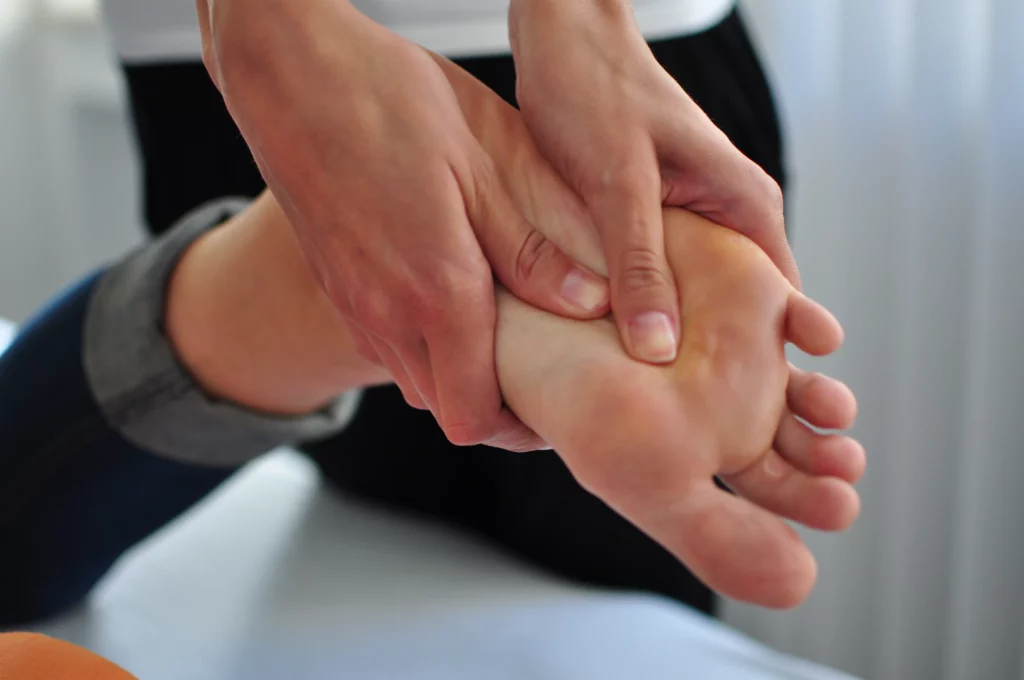Long Term Management of Lymphoedema

What is Lymphoedema?
Lymphoedema is a condition most commonly caused by the removal or damage to your lymph nodes as a part of cancer treatment, resulting in blockage to your lymphatic system, which is part of your immune system. The blockage prevents fluid from draining properly resulting in a localised build up causing swelling. This abnormal swelling is called lymphoedema.
Lymphoedema can be mild or severe depending on the damage to the lymphatic system and the treatment prescribed and if left untreated can cause anything from mild discomfort/pain to severe tissue damage (ulcers in legs), risk of infection due to tissue damage.
It is therefore very important to treat Lymphoedema from the outset to minimise the risk of it becoming severe and possibly leading to other medical issues.
Can Lymphoedema go away on its own?
Mild lymphoedema can go away with treatment and never becomes a major problem. For others, the condition does worsen. The later stages of Lymphoedema often can’t be completely reversed because the tissue under the skin has been damaged.
So, long term management is most necessary for major cases of Lymphoedema.
Long term management treatments for Lymphoedema
Exercise. Gentle exercises using the affected limb will help mobilise and drain lymph fluid build-up, very often reducing limb size immediately and also relieving discomfort and pain in the area. An example of an exercise for the arm would be a soft ball placed in the armpit and then using the arm to gently pump the ball. This movement is enough to start lymph flow. Exercise is so important and can help prepare you for everyday tasks such as carrying shopping, lifting items etc.
Exercises would normally be recommended for life as a way of maintaining a respectable lymph flow in the affected limb and preventing the condition from worsening.
Compression. If the affected limb has severe Lymphoedema, then maybe compression bandages are required initially. These would normally be applied by an MLD specialist on a regular basis to reduce the swelling and provide support and pain reduction to the area. The effect of the bandage provides constant pressure on the lymphatic system encouraging flow improvement and therefore reduction of limb size. When the limb has reduced in size, then the next step would be to use a compression sleeve to support the limb. This is lighter and less restrictive than bandaging.
Manual Lymphatic Drainage
MLD is a very gentle type of massage which is performed directly to the area of Lymphoedema by a qualified MLD specialist. The light skin stretch follows the direction of lymph flow encouraging the tiny vessels to pick up excess fluid in the area, thus helping drainage and reduction of swelling. Due to the very gentle nature of MLD, it can be used on sensitive or painful areas without discomfort to the client. Indeed, one of the effects of MLD is that it can give pain relief due to its calming effect on the nervous system.
Hydration. Although not a treatment, it is important to emphasize the importance of drinking plenty of water. Wearing compression garments, and drinking plenty of water are two actions you can take to help control the symptoms and progression of Lymphoedema. Think of a stagnant pond without water flowing through it, it has toxins and waste etc. that build up due to lack of flow. A free flowing river is much clearer and able to remove the waste. The body is the same. It needs water flowing through its vessels and tissues to flush out toxins and maintain a healthy balance.
Moisturise. Skin in an area affected by lymphoedema can become very dry and will often crack. It is important to moisturise regularly to keep the skin soft and prevent infection by preventing cracks from occurring. Cellulitis is an infection which occurs under these circumstances, and can be very dangerous if not treated immediately.
To summarise
It’s important to understand that Lymphoedema is often a long term condition that requires long term treatment to manage and improve symptoms.
Severe Lymphoedema can be assisted greatly by the treatments listed above but it can take time to achieve good results. Clients with mild Lymphoedema may see results more quickly but may always require a maintenance plan to keep the condition at bay.
Every client has a unique set of circumstances and it is important to get expert advice on the best plan to treat their condition.
At Katie Bell Physiotherapy and Wellness we offer an initial Free Taster MLD appointment where you can come and meet Jackie Buchanan, our MLD therapist to chat and discuss your circumstances and the best treatment plan for you.

